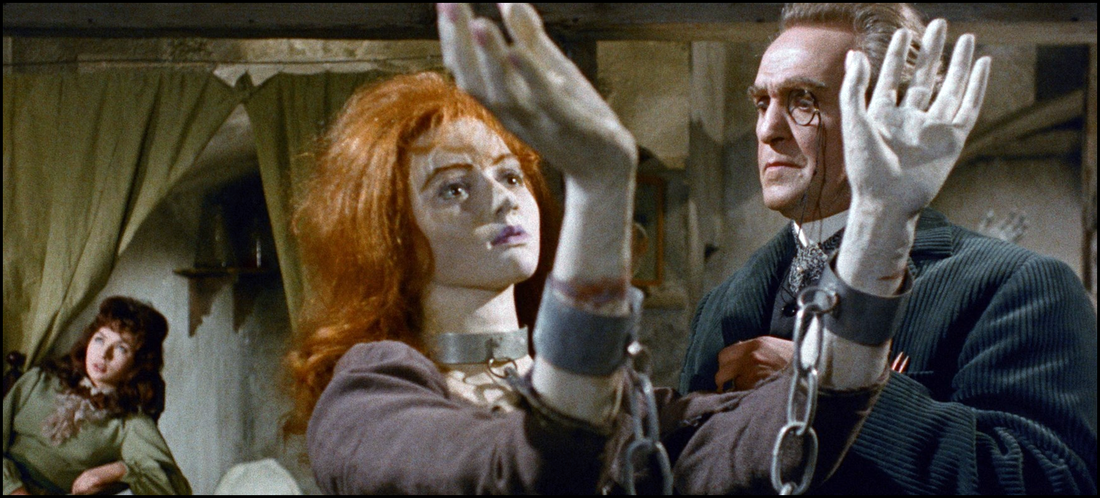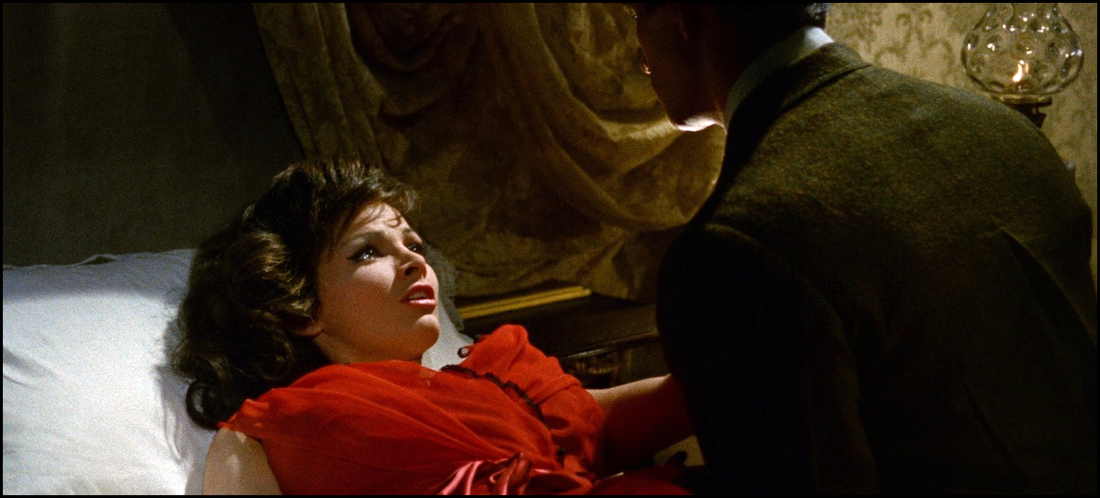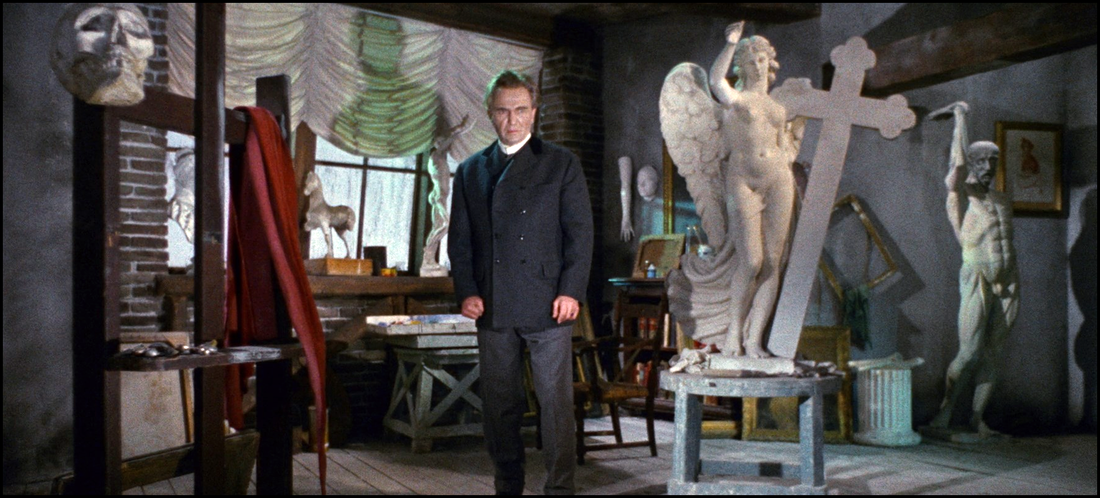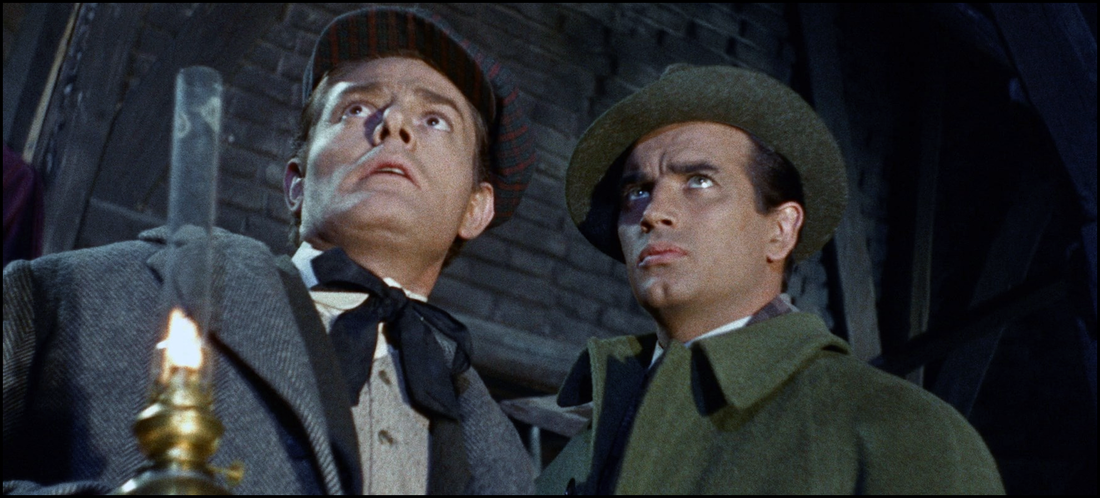Honestly, I’ve always considered this statement a bit of twisted semantics run wild. Clearly, both genders have the capabilities to conceive a ‘something’ and follow it through to fruition. Still, one who traffics in gender issues might argue that while a man built a house it is the woman who made it a home; so I try to keep the peace by, instead, considering the inherent value of every completed product. What’s done is done, after all, so staking out either misogynist or feminist poles only serves a debate where most of us see little argument.
Though it took a man to build Frankenstein, the monster needed a woman to complete him.
Now, surely the Monster was complete (in one sense) without a mate. Cobbled together from limbs of the dearly departed, ol’ Frank rose tall and proud off the operating table … but his utter lack of self-control prompted Dr. Frankenstein (and others) to believe domestication is what the beast required most. Why, a mate would give the Monster something to live for, something to share joy with, someone to terrorize villagers with … just as companionship has done for every relationship (ahem) since the dawn of Man.
Well, in one turn of the phrase, these two – for better or for worse – live until death does part them: but it’s far from a happy ending.
As can happen in the wide, wide world of film, other attempts have been made to explore the central Frankenstein mythology of bringing life to lifelessness, but – to my knowledge – it’s rarely centered so heartily on the fairer sex than in Giorgio Ferroni’s Mill Of The Stone Women (1960). This Italian chiller is part-Horror and part-SciFi, and yet it goes ‘all in’ on the big idea that love – as the Beatles said – is all you need. Well, that and a pair of mad geniuses who’ll stop at nothing to bring you back from dead even when that means draining the blood from every fair maiden the village has in the process!
From the product packaging:
“Young art student Hans von Arnam arrives by barge at an old mill to write a monograph about its celebrated sculptures of women in the throes of death and torture, maintained and curated by the mill’s owner, the hermetic Professor Wahl. But when Hans encounters the professor’s beautiful and mysterious daughter Elfie, his own fate becomes inexorably bound up with hers, and with the shocking secret that lies at the heart of the so-called Mill of the Stone Women.”
If you’re looking for a film that offers plenty of food for thought, then this Mill is certainly a solid addition to any genre library. Though it’s not the first Italian Horror feature ever made, it is the very first shot in color, and director Ferroni takes great advantage of the experience in ways big and small from the very first frame up until its bitter, blazing finish. While there is doubtless an essay or two waiting to be penned on such a topic, I’m instead choosing to stay focused on how this re-imagination of Mary Shelley’s immortal Frankenstein might give audiences a fresh perspective on the risks of sacrificing one’s soul in the pursuit of retaining mortality.
Professor Wahl (played by Herbert A.E. Bohme) loves his daughter Elfie (Scilla Gabel) … to a fault. In fact, he’s allowed this unhealthy affection to seep into every facet of his existence, so much so that he’s cut himself and those around him off from anything that seeks to intrude on that relationship. Furthermore, he won’t even allow her passing from this world into the next; whenever she does, he’s coopted what appears to be some very dark science into bringing her back to life each and every time she expires. Based on the evidence suggested, it’s looking like she’s kicked the proverbial bucket more often than the proverbial housecat blessed with nine lives.
Ahhh, were that the end of Wahl’s debauchery, then the small village of Veeze might enjoy a more robust population! In order to obscure his murders from scrutiny, the professor has perfected a process wherein he turns his victims into clay sculptures; and these life-sized statues are eventually displayed for all the whole town to see in the musical carousel housed at the base of the windmill in which he resides. This madman not only makes these women serve him in life but also they’ll continue enhancing his professional reputation in death!
As the film’s fictionalized ‘monster,’ Elfie isn’t blissfully unaware of her dire predicament.
She knows all too well what dark deeds her dear father has resorted to in order to preserve her supernatural existence. Despite some suggestions on her part (early on) of her tortured suffering from this cruel, cruel fate, she still nonetheless smiles when she awakens on her hospital gurney following a procedure. (Yes, she actually looks across the surgery room at the dead victim and smiles. You nasty shrew!) Though I found her motivation in the script a bit unclear, Elfie nonetheless acts on her sexual attraction to newcomer Hans. Was her stated misery legitimate? Was she seeking to hide her pain with sex? Or was the lady merely acting out on what she’d learned about the birds and bees somewhere along the way?
As you can guess, the script – IMDB.com’s listing cites an incredible six contributors – could’ve used a bit of polish with respect to Elfie’s motivations in this regard, though other watchers may’ve ‘filled in the blank’ with their own respective opinions. I’ve always tried to avoid this very human tendency, wishing that I could have all my questions answered by those spinning yarns. While I found every other character’s journey in here to have sufficient purpose (or plausibly founded), I can’t help but wonder if this film’s delicate creature was given short shrift precisely because she was meant to be little more than its ‘monster.’ At times evil and at times seemingly caught up in the whims of the manipulative men around her, the real Elfie never quite emerged from the darkness, and – call me silly – I really wanted to know her more. She certainly deserved better from her father, but that wasn’t meant to be.
As for the special features?
Arrow Video continues to prove why they’re the gold standard for presenting classic releases these days. The set includes four different cuts of the flick (censors be damned!); I’ve only had the good fortune at this point of making my way through two of them, but the edits are interesting to consider when evaluating precisely how to tell a story visually. Arrow has also restored the Italian and English soundtracks as well as provided new translations for English subtitles on the Italian track. There’s a visual essay on the nature of roles in Gothic horror that’s written and delivered by Kat Ellinger; honestly, it’s a solid listening experience, though one might quibble with a conclusion here and there. There are some archival interviews provided on minidocumentaries as well as some artwork, booklet, and poster-sized photos prepared for collectors. Lastly, there’s an audio commentary from Tim Lucas that’s worth a listen: as can happen when academics are let loose on a subject, he wanders a bit too freely from topic-to-topic, and often times he isn’t so much talking about this film as he is the era, the film’s influences, etc. Still, I enjoyed it more than I usually do the stuffy historian’s lecture, so I encourage others to check it out.
Highly recommended.
I have no problem admitting that Mill Of The Stone Women isn’t going to serve the interests of every audience member who finds it as Horror of the bygone era – especially the more Gothic-inspired entries – seems to have fallen out of favor for any number of reasons. The best reasons to experience this film? Well, my first argument would be that it’s a first – a rare first that’s actually quite good – as Mill is the first uniquely Italian film to be shot in color; and the palate director Ferroni employs in curious ways makes this as much brainwork as it is pleasant on the eyes. Second, I’d offer up that the film explores one of the more fascinating variations on the whole Frankenstein mythos that’s out there (especially from its era). Lastly, having watched this now a few times I’m surprised by how much more I get out of it with each subsequent viewing: clearly, there’s a wealth of potential symbolism and narrative subtext at play in here – far more than most I’ve experienced from the 1960’s – and never let it be said that I’ll snub an intelligent viewing opportunity when I get the chance. Film nerds, this one’s for you.
In the interests of fairness, I’m pleased to disclose that the fine folks at Arrow Video provided me with a complimentary Blu-ray disc of Mill Of The Stone Women (1960) by request for the expressed purposes of completing this review; and their contribution to me in no way, shape, or form influenced my opinion of it.
-- EZ





 RSS Feed
RSS Feed